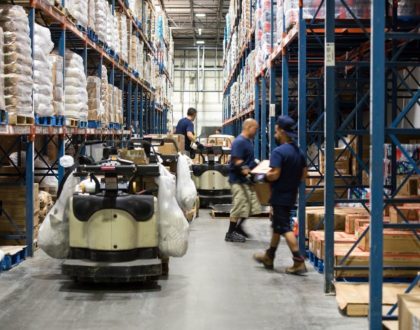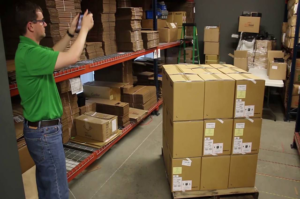Image Enabled Supply Chain Promises Future Benefits

Some people think that the supply chain is behind in terms of technology. The technology, though, is available. As an industry, we should start looking at the best ways of leveraging these technologies for benefit.
Consider mobile devices. My nine-year-old daughter uses an iPad and FaceTime to video chat with me and never gives it a second thought. In a distribution center, though, it’s not so easy. Not every operator working in a distribution center can take pictures and or even send a text message. Many don’t even have access latest mobile devices. The supply chain community is risk averse and the cost of failure in such a mission critical function is high. The focus is on being timely, as well as complying with a variety of regulations and standards.
When a box leaves the distribution center, getting it to the final destination requires cooperation between a variety of entities. As it passes from the distribution center through Fed Ex to the United States Post Office, it needs to be scanned for tracking by each party. If one party in the chain changes the process, such as using a different label or label printer or barcode specification, it’s critical that the change is workable for everybody. If the chain is broken, workers must manually intervene which takes time and lowers accuracy. These dependencies make change daunting.
At the same time, technology is quickly becoming the key to remaining competitive. No organization can afford to stay behind for too long. Let’s consider some easy changes that would be a reasonable place for a supply chain organization to start the shift.
Today
Today’s smartphone users take selfies all the time. Pictures can also help solve many enterprise mysteries, especially when there are multiple partners working together to ship a product to the end customer. A picture can be a critical enabler to allow all parties to work together to accomplish a supply chain goal.
Recently, I was discussing retail chargebacks with a fellow supply chain expert. Retailers impose chargebacks to their suppliers and these suppliers treat these as a cost of doing business because they don’t have any tools to better the situation. This fellow pointed out that retailers have buyers that work with the suppliers, buy the product and then ensure the product is shipped to the store and available for the customers to shop. Every retailer’s worst nightmare is not having the product when an anxious and excited customer walks in to buy it. Not only is a sale lost, but it hurts the store’s brand. Unhappy customers talk to their friends and often don’t return.
Consider a common scenario: a buyer procures a product, but the shipment arrives damaged. The buyer is in big trouble because:
- The money spent on inventory is locked, because that merchandise that is sitting idle cannot be sold at a retail store, nor can be shipped back to the supplier because it is damaged.
- The store can potentially run out inventory because the merchandise has not made it to the store, potentially damaging both brand and store reputation.
- It can take weeks or longer to resolve the situation with the supplier. A complex process of inspection and negotiation ensures about whether damaged product can be repaired and resold or must be replaced.
As everyone jumps through hoops to resolve the situation, a problem in the supply chain is created. Urgency is created with the buyer, the supplier, the logistics providers and more. The cost for urgency is high. For example, air freight costs more than ocean freight, as much as six to 20 times more.
Recommended Posts

Top 10 Best Practices that You Can Implement in Your Distribution Center Tomorrow with No System Changes and Very Little Process Changes
December 15, 2021







